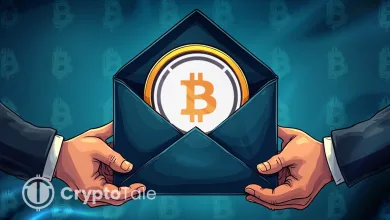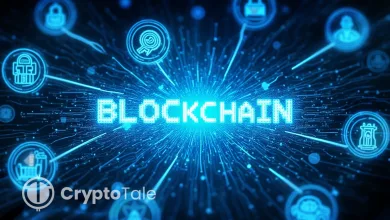What Are Blockchain Rollups? Optimistic and ZK Rollups Explained in Detail

Blockchain has robust security measures, but they come at the cost of speed and transaction costs. Not all blockchains can process thousands of transactions per second, and moreover, the increase in scalability can compromise security and decentralization.
There are always applications that need to execute transactions at a faster speed without compromising any other aspects. Blockchain rollups have emerged to solve this issue. In this article, you can get a detailed description of it.
What are Rollups?
Rollups are Layer 2 scaling solutions that process transactions off-chain, thereby reducing congestion and computational load on the Layer 1 blockchain. Then, by bundling transaction data into batches and submitting them to the main chain, rollups increase transaction throughput and lower costs. This technology has gained so much popularity that Ethereum has shifted from sharding to rollup-centric.
How Does Rollups Work?
Off-Chain Processing
Rollup smart contract processes transactions off-chain, allowing for faster and more efficient transaction handling. Users conduct their transactions on the rollup chain, where a single party known as a “sequencer” confirms the transactions. Furthermore, the sequencer also constructs Layer 2 blocks, manages the submission of transaction data, and proofs the Layer 1 chain (main).
Bundling of Transactions
The rollup smart contract groups multiple transactions into a single batch. Bundling reduces the amount of data that needs to be uploaded to the main blockchain, which reduces users’ gas fees. The sequencer plays an important role in this process by organizing the transactions and making sure that they are packed for submission.
Validation and Compression (ZK-Rollups)
For ZK-rollups, zero-knowledge proofs are used to condense transaction data into a brief proof. The proof is generated off-chain and is then added to the primary blockchain. These proofs provide assurance that the rollup has correctly processed the given batch of transactions, ensuring both efficiency and security.
Submission to Main Blockchain
After the process of bundling, the smart contract uploads the transaction batch or the compressed batch to the main blockchain. This ensures that all transaction data is recorded on the Layer 1 chain, making it permanent and secure from any modification or censorship.
Settlement of the Blockchain
Once uploaded, the transaction batch or proof is validated on the main blockchain. In optimistic rollups, a fraud-proof technique is used to verify the legitimacy of transactions. If no fraud is detected, the transactions are finalized on the main blockchain.
What are the Types of Rollups?
There are two types of rollups: Optimistic rollup and ZK rollup.
Optimistic Rollup
Optimistic rollups presume all transactions are valid by default unless proven otherwise. They batch transactions off-chain and post transaction data to the layer 1 blockchain as call data. Instead of submitting proof of validity, they offer a challenge window where anyone can challenge the validity of a transaction by computing a fraud-proof.
If there is no indication of fraud, the transactions are approved. On the other hand, if fraud-proof is successful, the transaction will be invalid, and the roll-up protocol would re-execute the transactions and update accordingly. Furthermore, the block validator responsible for the invalid transaction will be held accountable and penalized.
ZK Rollup
Different from Optimistic rollups, Zero-Knowledge (ZK) rollups don’t follow transaction validity by default. Instead, they verify transactions and produce cryptographic proofs of their validity, which are then submitted to the layer 1 blockchain. These rollups communicate with the layer 1 blockchain through two smart contracts: one contract stores data on roll-up blocks and monitors state updates, while the other smart contract verifies the submitted ZK proofs.
The ZK rollups generate succinct proofs using zero-knowledge proofs, which reduce the amount of data processed on-chain while preserving transaction security and privacy. This technique allows validators to confirm the accuracy of transactions without accessing their details.
A major advantage of the ZK rollups is that users don’t have to wait to withdraw their tokens because transaction validity is verified instantly. In addition, it doesn’t require submission of transaction data to the layer 1 blockchain.
What Are the Advantages and Disadvantages of Blockchain Rollups?
Advantages
- Increase in Scalability: Rollups significantly increase scalability by processing and grouping multiple transactions off-chain before sending them to the main blockchain. This allows the network to handle a higher volume of transactions.
- Less Congestion and Fees: Rollups lower transaction costs by reducing congestion on the blockchain, making it more affordable for users.
- Fast Transaction: By transferring large amounts of computation off-chain, rollups allow for quicker transaction processing, leading to a better user experience.
- Enhanced Privacy: Some solutions like ZK rollups use zero-knowledge proofs to ensure transaction privacy, protecting the security and integrity of the network.
Disadvantages
- Security Risks: Rollup smart contracts can contain bugs. While fail-safes and audits can mitigate these risks, reliance on external programs for transactions carries additional risk.
- Centralization Concerns: Rollups are still in their early stages, and the networks they operate on are slightly centralized. Development teams behind rollups may maintain partial control over the network, potentially pausing or switching it off.
- Transition to Decentralization: While rollups generally plan to decentralize, this process is still ongoing. For example, Optimism began transitioning to community governance, and advances in rollup technology aim to address issues related to centralized network control.
Examples of Blockchain Rollups
Arbitrum
Arbitrum (ARB) is an optimistic rollup that is designed to provide a compatible and scalable solution for smart contracts. Its features include lower transaction costs, high throughput, and perfect compatibility with existing Ethereum smart contracts. Furthermore, it uses Arbitrum AnyTrust for security solutions, Arbitrum rollup for ecosystem, and Arbitrum Orbit for blockchain infrastructure solution.
Optimism
Optimism (OP) is an Ethereum-based optimistic rollup designed to improve scalability while sustaining its compatibility with existing applications. It is well known for its shared, standardized, and open-source development stack called the OP Stack. In addition, it allows developers to launch their blockchain and deploy smart contracts (existing) with minimal changes.
Base
Base, created by Coinbase using the OP Stack, is based on the Ethereum optimistic rollup. It aims to lower the entry barrier for developers by offering them a flawless development experience and interoperability. This Ethereum rollup is designed to provide a scalable and user-friendly platform for dApps.
StarkNet
StarkNet (STRK) is an Ethereum-based ZK rollup developed by StarkWare. It utilizes its zero-knowledge technology, STARK, to calculate and verify transactions. STRK supports general-purpose communication, allowing developers to deploy complex smart contracts and dApps while ensuring high throughput and efficient blockchain scalability.
Conclusion
Both optimistic and ZK rollups are revolutionary layer 2 solutions that enhance the scalability, speed, and cost-effectiveness of Ethereum and other blockchains. They process transactions off-chain, thereby reducing congestion and lower fees, resulting in a better user experience. Furthermore, rollups are expected to play a major role in the DeFi space.




